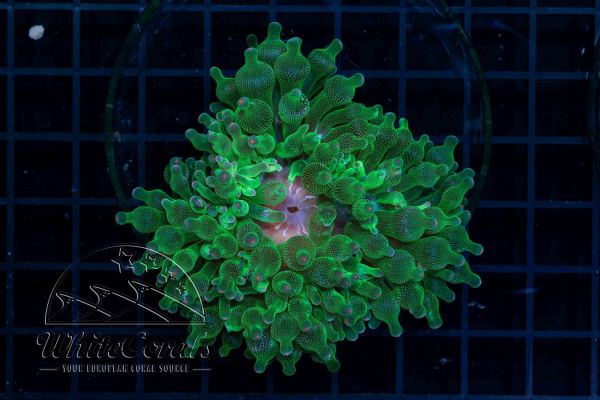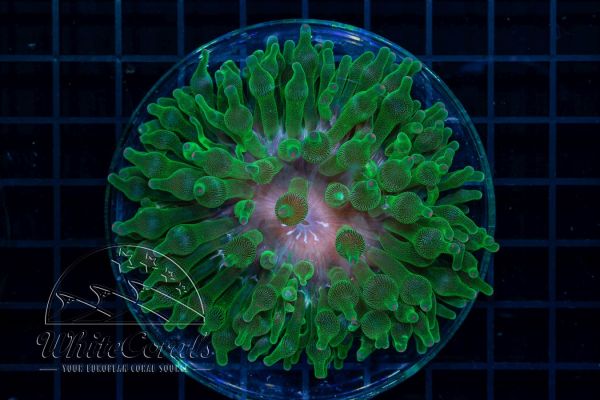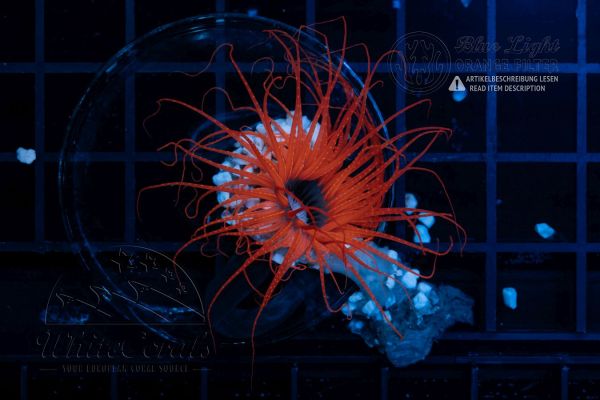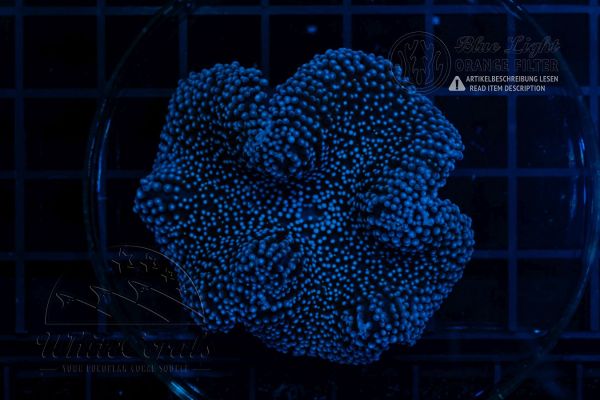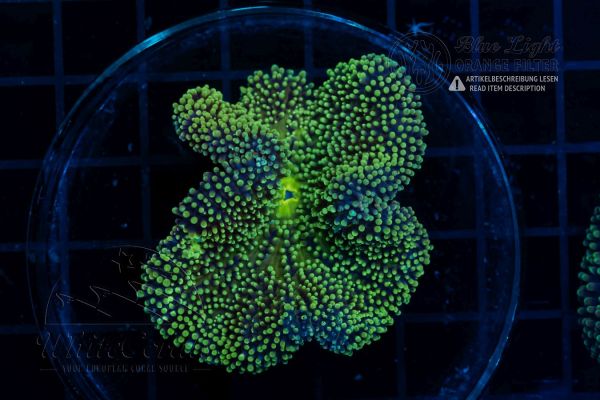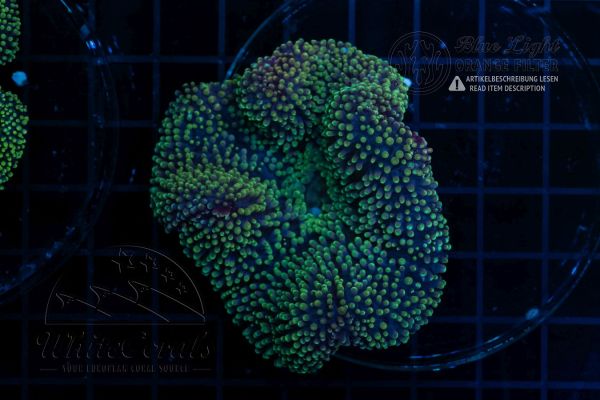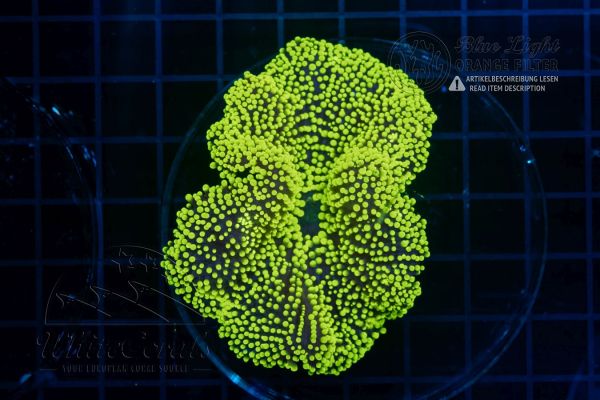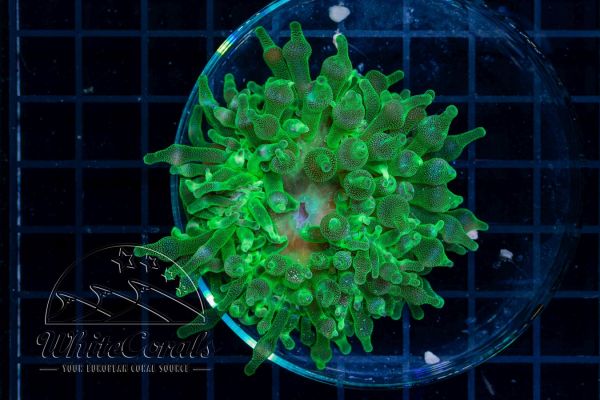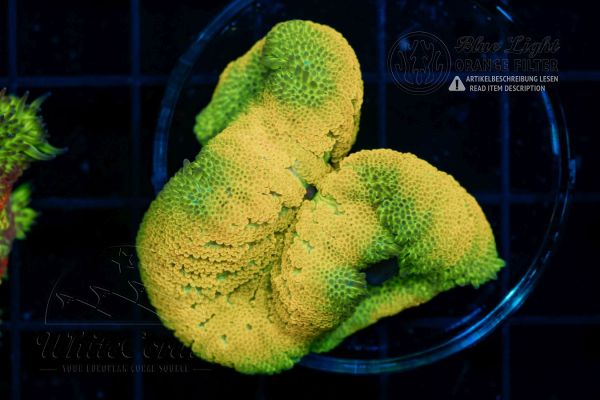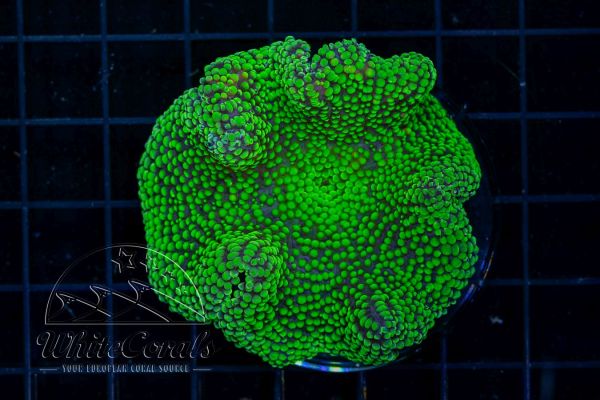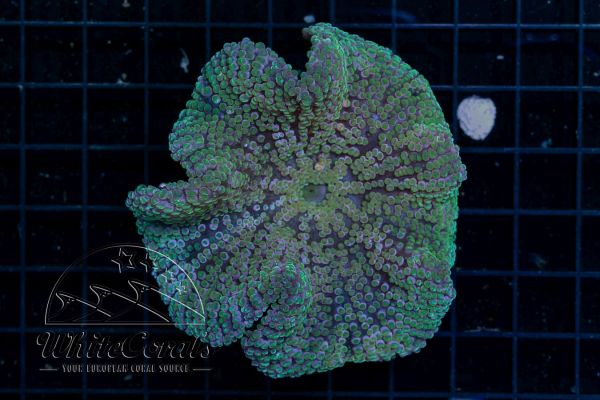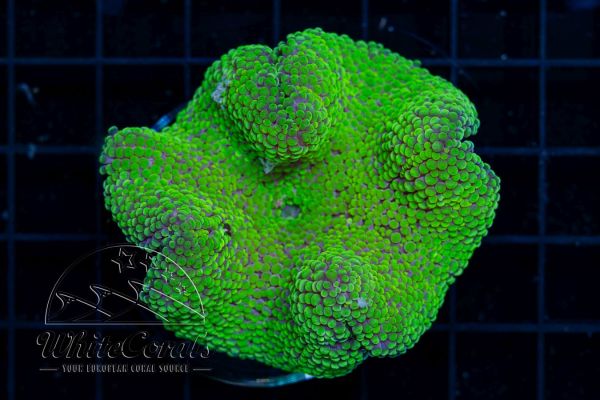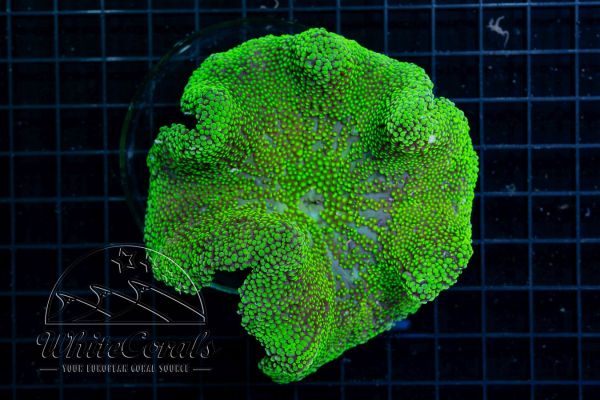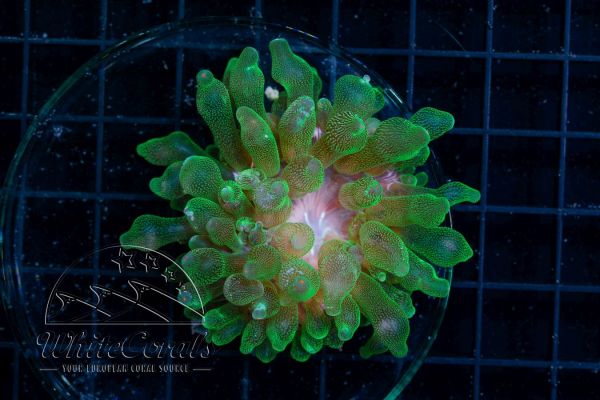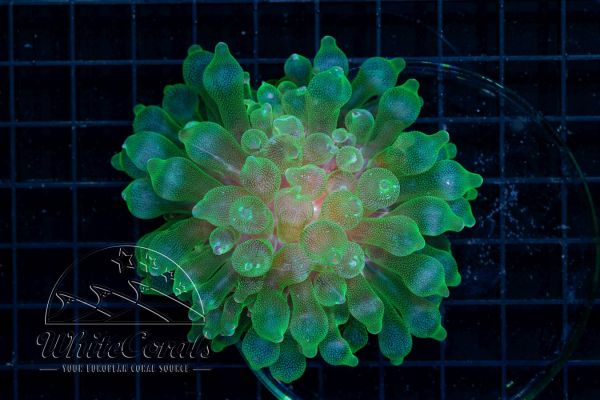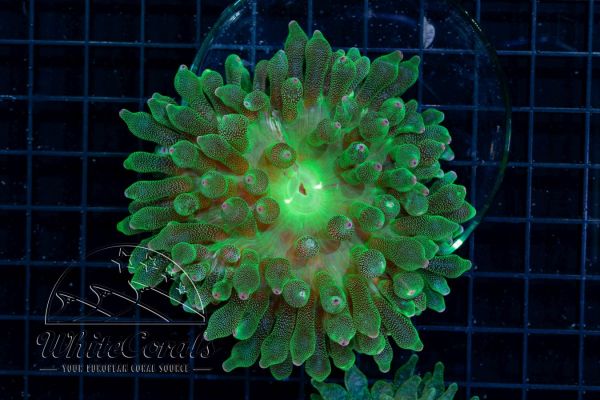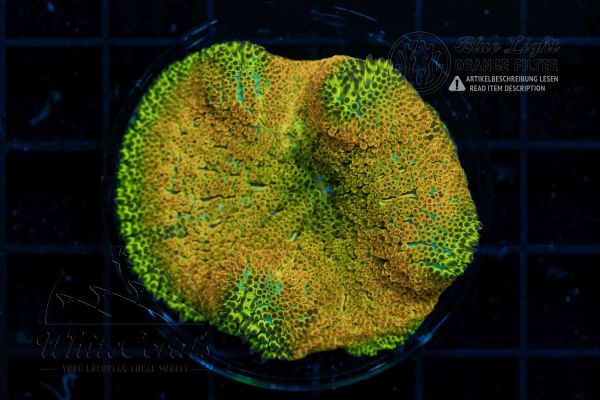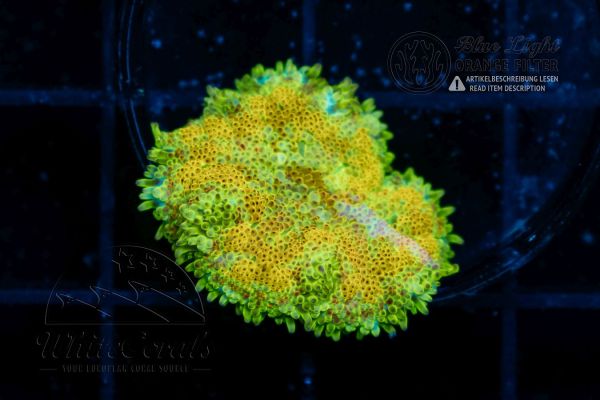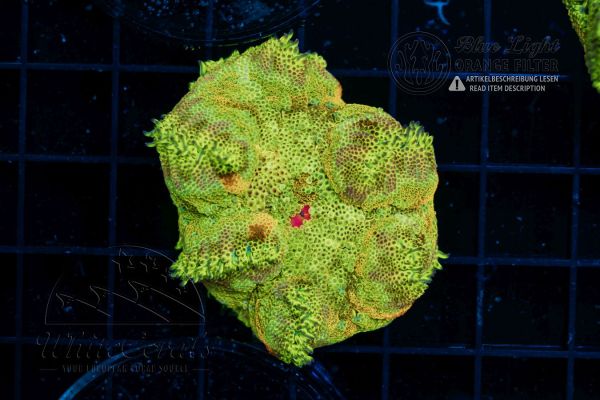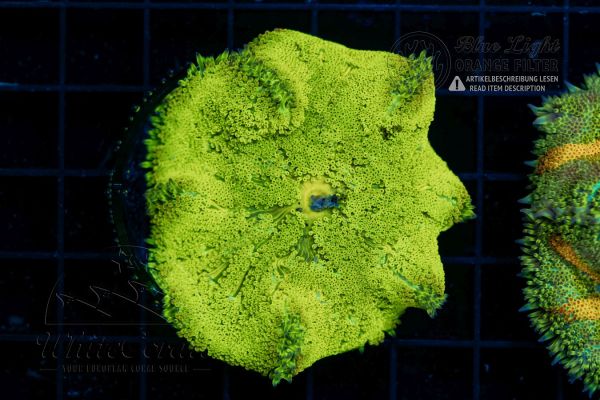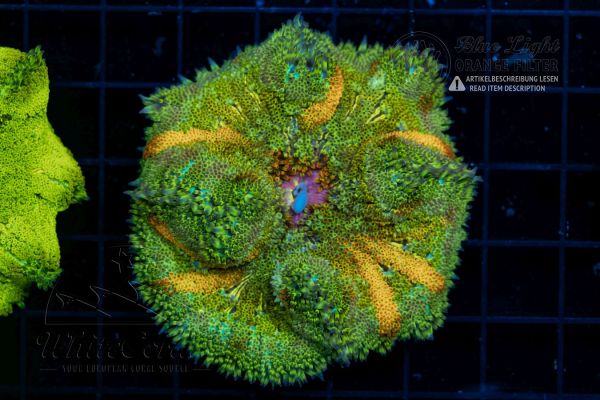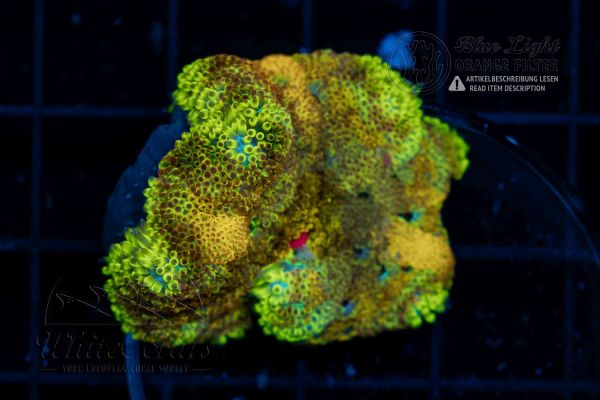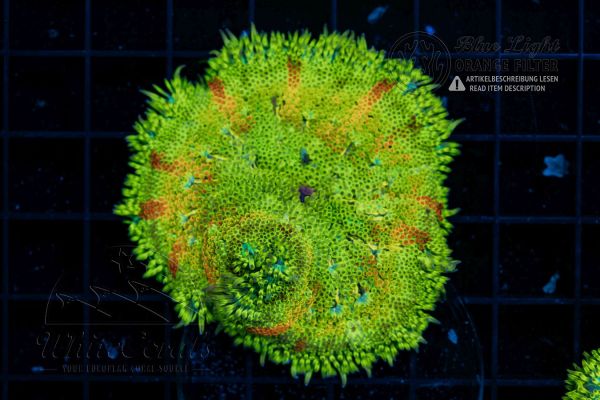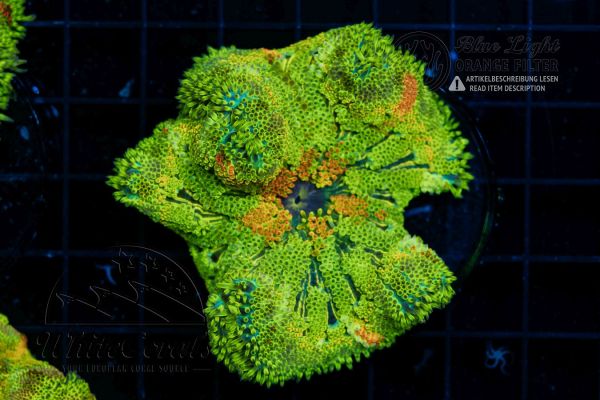Corals
Anemones also belong to corals having the origin in Actiniaria (water lilies).
Real sea anemones are often confused with other corals from the original Cnidaria (Coelenterata) due to their similar appearance. Sea anemones are designated colloquially as „Blumentiere“ or „Animal plant“. Sea anemones are suitable for experienced aquarists and older aquariums with a stinding time of more than 6 months. The stinging wander sea anemone have stinging cells (Spirocysts) which sometimes produces very strong nettle toxin. They get attached to the substrate with the help of a flat foot disc but can also change the location.
The mouth opening is usually spiral-shaped and lies in the middle of oral disc with many tentacles. Sea anemones do not build any colonies and can move along slowly with the help of its foot disc. Sea anemones do not have skeleton (are hollow from inside). It is worth to pay special attention to these animals; so anemones are designated as corals with personality by the scientists though they do not have brain. So two corals of the same species can be different in behaviour which becomes apparent in the preference of location and reaction of tentacles to external influences.
Entacmaea quadricolor Green Blizzard Orange Tip
EUR 49,90*
to articleEntacmaea quadricolor Green Blizzard Orange Tip
EUR 49,90*
to articleCerianthus filiformis Orange (Azooxanthell)(Filter)
EUR 44,90*
to articleStichodactyla haddoni Blue (Filter)
EUR 149,90*
to articleStichodactyla haddoni Green (Filter)
EUR 79,90*
to articleStichodactyla haddoni Green (Filter)
EUR 79,90*
to articleStichodactyla haddoni Neon Green (Filter)
EUR 89,90*
to articleEntacmaea quadricolor Green Blizzard
EUR 49,90*
to articleStichodactyla Min Max Orange (Filter)
EUR 44,90*
to articleStichodactyla haddoni Neon Green
EUR 99,90*
to articleStichodactyla haddoni Neon Green
EUR 99,90*
to articleStichodactyla haddoni Neon Green
EUR 99,90*
to articleEntacmaea quadricolor Green Blizzard Orange Tip
EUR 59,90*
to articleEntacmaea quadricolor Green Blizzard Orange Tip
EUR 59,90*
to articleEntacmaea quadricolor Green Blizzard Orange Tip
EUR 59,90*
to articleStichodactyla Min Max Orange (Filter)
EUR 44,90*
to articleStichodactyla Min Max Multicolor (Filter)
EUR 44,90*
to articleStichodactyla Min Max Multicolor (Filter)
EUR 49,90*
to articleStichodactyla Min Max Green (Filter)
EUR 44,90*
to articleStichodactyla Min Max Multicolor (Filter)
EUR 49,90*
to articleStichodactyla Min Max Multicolor (Filter)
EUR 49,90*
to articleStichodactyla Min Max Multicolor (Filter)
EUR 49,90*
to articleStichodactyla Min Max Multicolor (Filter)
EUR 49,90*
to articleWhich anemone species to buy?
At Whitecorals online shop, we always sell rare anemones.
Very often questioned are the sea anemones of species Stichodactyla with variants Stichodactyla Green Fields and Stichodactyla Multicolor. Stichodactyla are carpet anemones which nettles strongly and can become very big. Caution: Carpet anemones can eat fishes if they are not fed. It becomes real ultra with Macrodactyla doreensis White Tips (corkscrew-anemone with an incredible beautiful colour – light green-white tentacle) Entacmaea Sunburst (Bubble tip anemone with bright green -orange, nipple –shaped tentacles) and Stichodactyla Neon (extremely- bright -green carpet anemone)
Host – anemones and clown fishes
Sea anemones can form symbiotic relationships with various organisms. Fishes (the most popular representative naturally is the clownfish), crabs (e.g.: Porcelain crabs) and shrimps are included in this. Clownfishes are immune against the nettle toxin of anemones. Anemone provides shelter to clownfishes against any danger, in return the fishes protect the anemone from predators. The behaviour of fishes and anemones in the marine aquarium is often very impressive and fascinating. Clownfishes carry some food in the anemone which can help them in feeding. Often imported host anemones for clownfishes are Entacmaea quadricolor (Bubble tip anemone), Heteractis crispa, Heteractis magnifica, Macrodactyla doreensis (corkscrew anemone), Stichodactyla gigantea and Stichodactyla haddoni (carpet anemone)
Maintenance of anemones
Sea anemones also have mesenteric filaments like hard corals and disc anemones which can be used for protection against other anemones. Very often the appearance of these filaments are an indication to the physical harassment of the anemone such as too strong water flow, mishandling or entanglements by neighbouring corals. Since most of the anemones have symbiotic algae, the light spectrum should be adapted sufficiently with the type. As source of light, different lamps can be provided-from LED lights to HQI burners. However too much light may cause discolouring of anemone. With sufficient care, the anemones can be kept in the marine aquarium for several decades. One can feed frozen food or liquid plankton to the anemones.
Multiplication of anemones
Anemones get separated asexually if they feel „good“ in the aquarium. One can separate it by making a careful incision in the oral disc of the animal but there is always the risk of animals entering it. In case you have questions regarding individual examples of our anemones or if you want to find out whether your tank is suitable or not for maintaining these animals, please do not hesitate to contact us at Whitecorals. We advice and serve both our customers as well as dealers in the EU.
